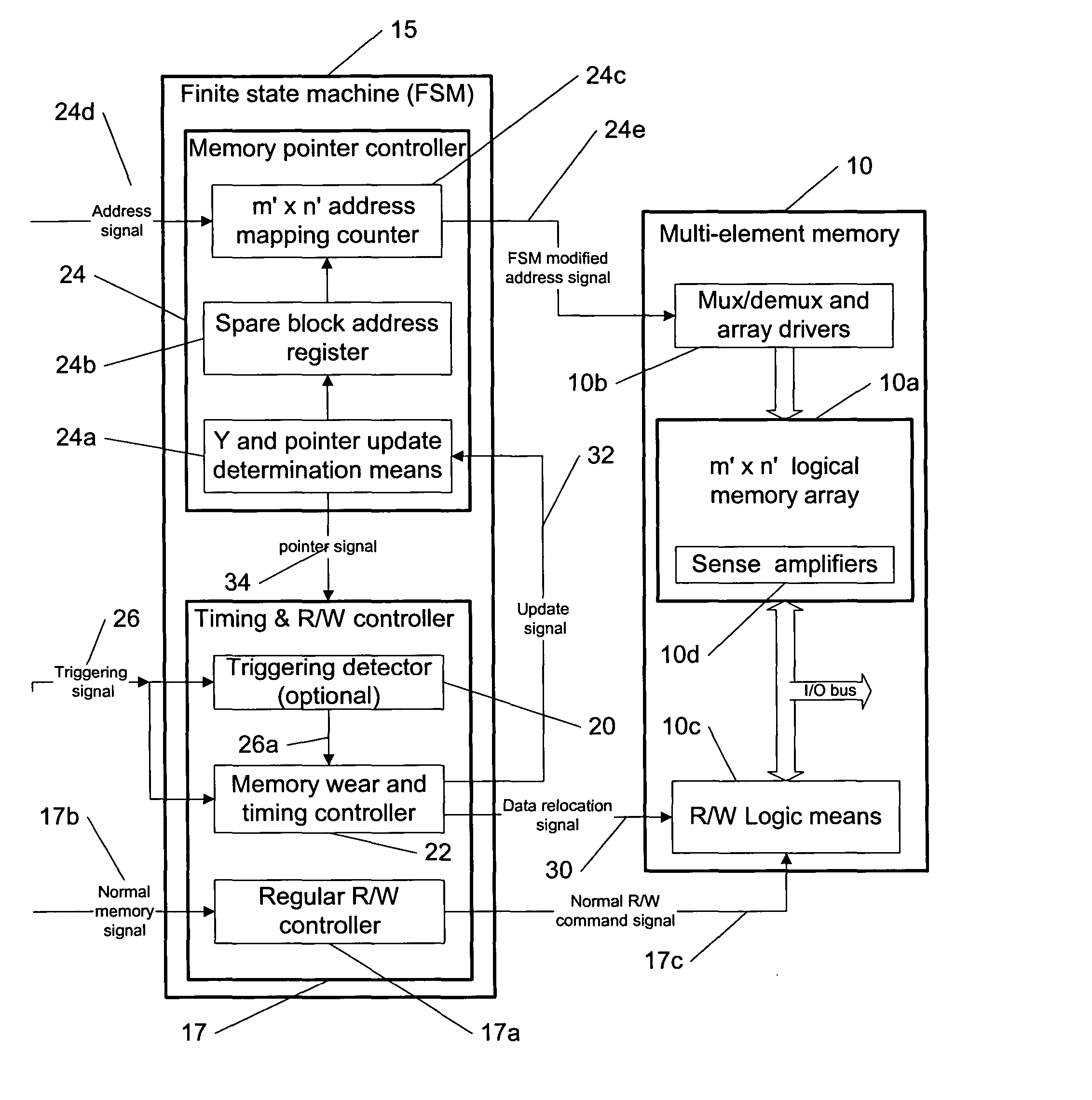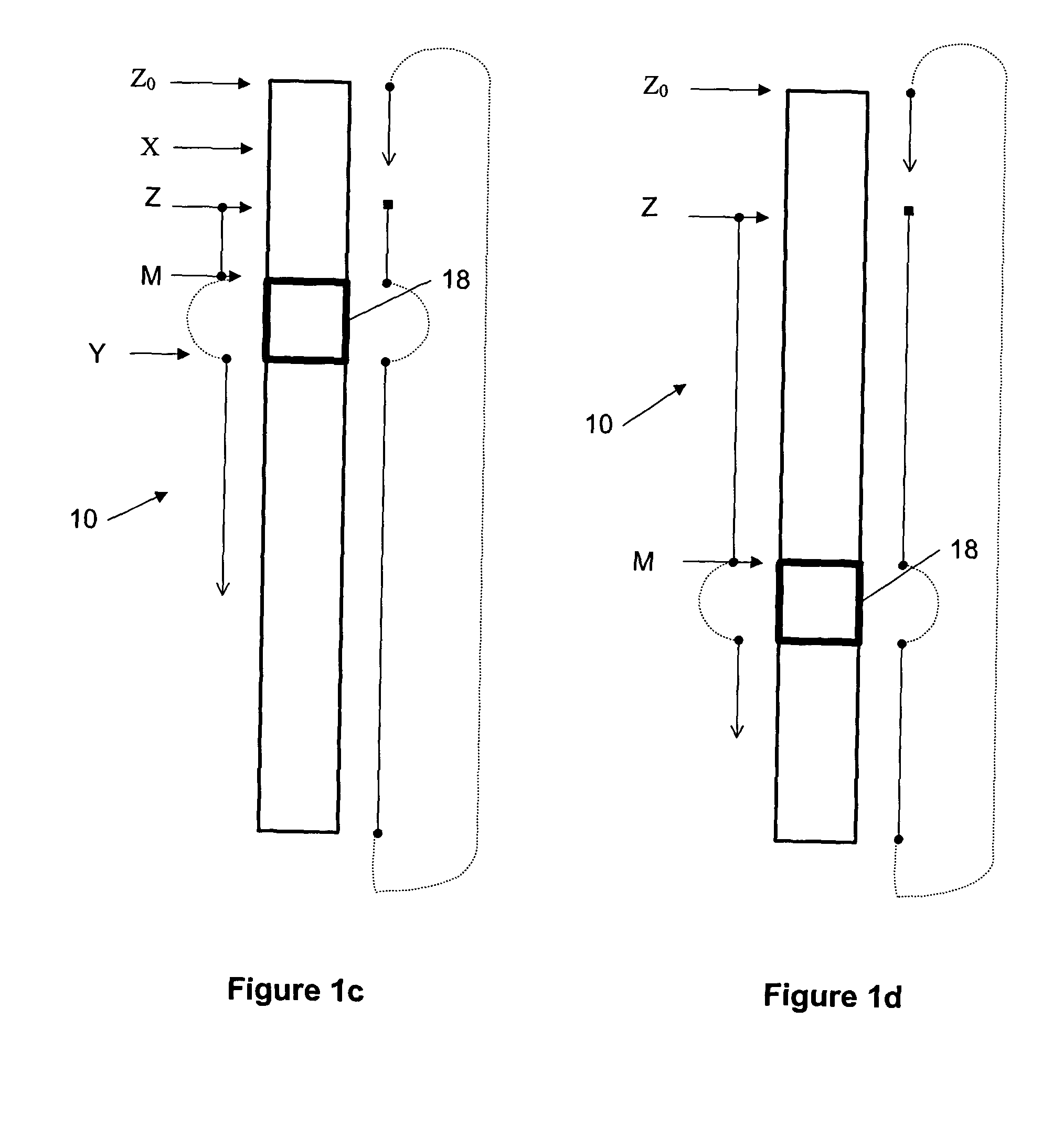Memory wear leveling
a technology of memory wear and leveling, applied in the field of memory wear leveling, can solve the problems of affecting the use of memory architecture, and deteriorating of conventional memories (e.g. flash memories), and achieve the effect of reducing the wear of hotspots
- Summary
- Abstract
- Description
- Claims
- Application Information
AI Technical Summary
Benefits of technology
Problems solved by technology
Method used
Image
Examples
Embodiment Construction
To assist in clarifying the technical subject matter of this invention, a few symbols are defined in Table 1 and further described in the text.
TABLE 1ReferenceSymbolDescriptionFIG.Z0A physical zero address / pointer, which isFIGS.always zero and pointing to the first memory1a-1d,element of the memory space 10 or 10u.FIG.2a-2c.ZA logical zero address / pointer; it is also calledFIGS.a second memory pointer.1a-1d,MA spare block address / pointer; it is also called aFIGS.first memory pointer.1a-1d,FIG. 2a.CA size of the memory 10 (a total number of theFIG. 1a.memory elements).SA size of the spare memory block 18 (a totalFIG. 1a.number of the memory elements in the spareblock).XA variable logical address of a memory elementFIGS.in the actual memory 10.1b-1c,FIG. 2a.X0,Logical pointers of the memory elements in theFIG. 2a.X2, . . . XC−1memory 10.UA variable logical address of a memory elementFIG. 2b.in the memory space 10u seen by the user.U1,Logical pointers of the memory elements in theFI...
PUM
 Login to View More
Login to View More Abstract
Description
Claims
Application Information
 Login to View More
Login to View More - R&D
- Intellectual Property
- Life Sciences
- Materials
- Tech Scout
- Unparalleled Data Quality
- Higher Quality Content
- 60% Fewer Hallucinations
Browse by: Latest US Patents, China's latest patents, Technical Efficacy Thesaurus, Application Domain, Technology Topic, Popular Technical Reports.
© 2025 PatSnap. All rights reserved.Legal|Privacy policy|Modern Slavery Act Transparency Statement|Sitemap|About US| Contact US: help@patsnap.com



